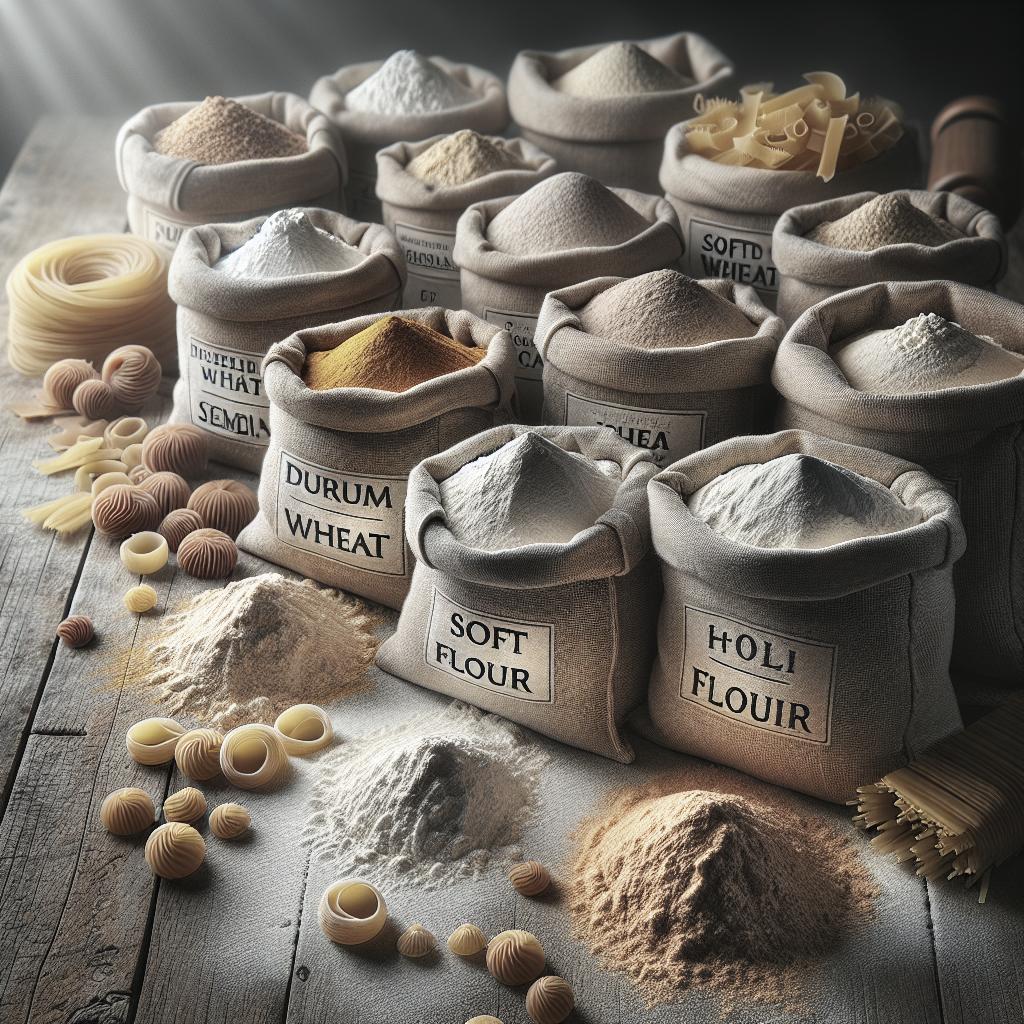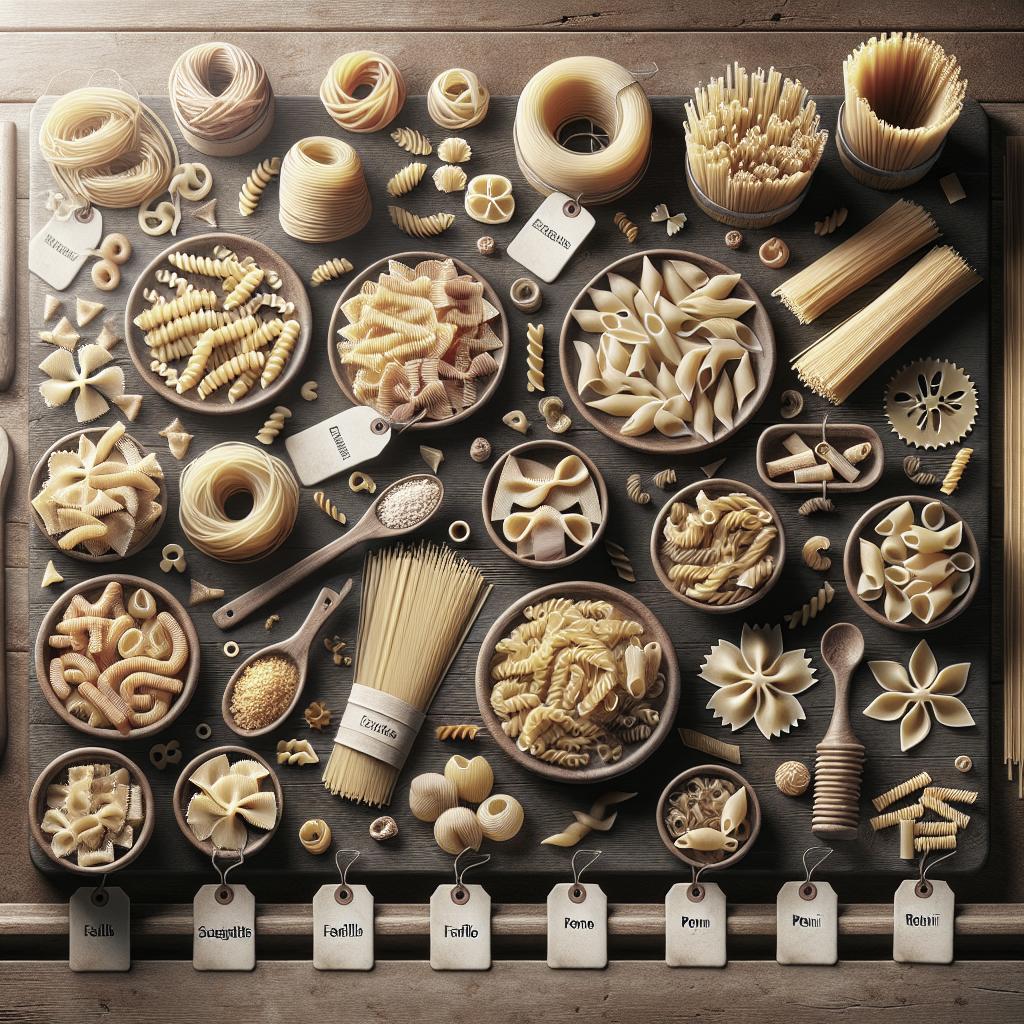“`html
The Best Flours for Pasta Making
Pasta has been a beloved staple in culinary traditions around the world for centuries. While the sauce may be crucial, the foundation of any great pasta dish lies in the quality of the pasta itself. Understanding the best types of flour for pasta-making can transform an average dish into an extraordinary one. This article will explore what makes pasta unique, the distinct characteristics of high-protein hard flours, delve into the properties of semolina flour, and ultimately help you identify the most suitable flour for your pasta creations. Whether you’re a seasoned chef or a home cook eager to perfect your pasta, this guide will provide the insights you need to choose the ideal flour for your next delicious pasta dish.
First, What Exactly Is Pasta?
Pasta is more than just a carb-loaded comfort food; it’s an art form and a staple in many diets. Originating from Italy, pasta is made from unleavened dough consisting mainly of wheat flour mixed with water or eggs. It is then formed into sheets or various shapes and cooked by boiling or baking. The beauty of pasta lies in its versatility and the myriad of possibilities it offers—from delicate tagliatelle and hearty rigatoni to stuffed ravioli and fuss-free spaghetti.
Globally, pasta has evolved with regional twists, influenced by the availability of local ingredients. Regardless of these variations, the essence of pasta remains in its fundamental ingredient: flour. While different cultures may incorporate unique ingredients, the texture, taste, and quality of pasta hinge significantly on the type of flour used in its making. Here, we explore how different flours contribute to pasta’s ultimate structure and flavor.
High-Protein (aka “Hard”) Flour
High-protein, or “hard,” flours are crucial for creating pasta that holds its shape and texture. Hard flours, such as durum wheat flour, are particularly known for their high gluten content, which is essential for pasta dough that is both firm and elastic. The elasticity provided by the gluten helps the pasta maintain its shape after being cut, supporting both delicate pasta sheets used in lasagne and hearty pasta like penne which needs to withstand robust sauces.
When making pasta, the flour’s protein content plays a pivotal role in the final product’s quality. A higher protein content means more gluten formation, which translates into a chewier, more substantial texture. This is particularly beneficial for pasta cooked al dente, a cooking style favored by pasta purists for creating a satisfying bite. High-protein flours are indispensable for pasta shapes that need durability and a perfect bite when cooked.
Semolina: Coarse Durum Wheat Flour
Among the various flours used for pasta making, semolina is perhaps the most traditional and revered. Semolina flour is made from durum wheat and is coarser than regular wheat flour, characterized by a yellow hue and granulated texture. These characteristics contribute to pasta that not only has a firm bite but also resists sticking, hence maintaining its consistency and texture during cooking.
Semolina’s popularity in pasta making is attributed to its high gluten and protein content, akin to that of hard flours, but with the added benefit of its unique texture. It is this texture that allows for the creation of robust pasta shapes that maintain their integrity in boiling water. Semolina flour is often the go-to choice for handmade pastas that are intended to have a rich, toothy characteristic. It is particularly preferred in the production of traditional Italian pasta varieties.
So, What Is the Best Flour for Making Pasta?
Determining the best flour for pasta-making ultimately depends on the type of pasta you intend to create and the culinary experience you’re aiming for. For those seeking traditional pasta with a firm bite and authentic texture, semolina flour remains a top choice due to its high gluten content and unique grainy consistency. It is ideal for making sturdy pasta shapes and delivers that authentic ‘al dente’ texture that many pasta lovers covet.
On the other hand, all-purpose flour, which is lower in protein compared to hard flours, can offer a more tender noodle when combined with eggs, often used in softer, more delicate pasta types like tagliatelle or ravioli. Blending semolina with all-purpose or high-protein flour can provide a balance, offering both robust flavor and improved texture. As you experiment with different types of flours, the best choice will align with your desired pasta characteristics and personal preference.
Final Thoughts
| Flour Type | Characteristics | Best Used For |
|---|---|---|
| High-Protein Flour | High gluten content, strong elasticity | Hearty pasta shapes, al dente cooking styles |
| Semolina Flour | Coarse texture, high protein | Traditional Italian pasta, maintaining shape |
| All-Purpose Flour | Lower protein, softer texture | Delicate pasta, such as ravioli or tagliatelle |
“`


